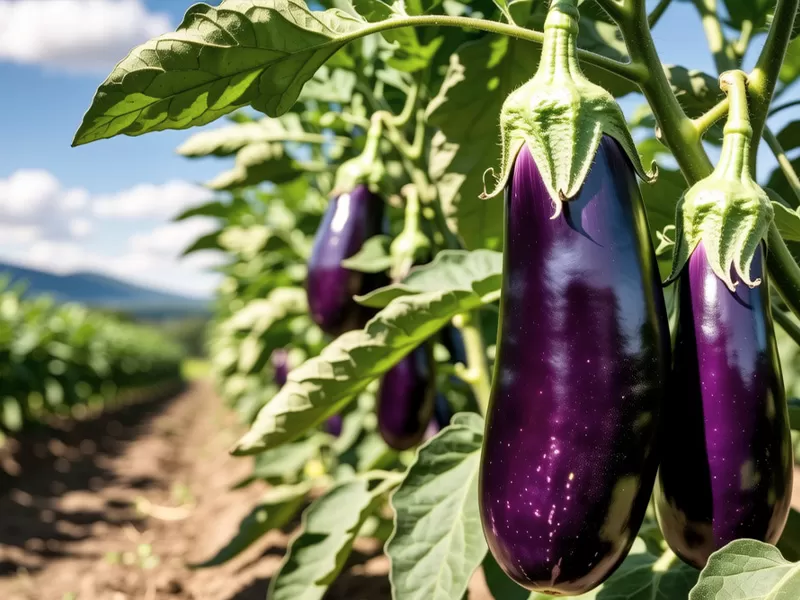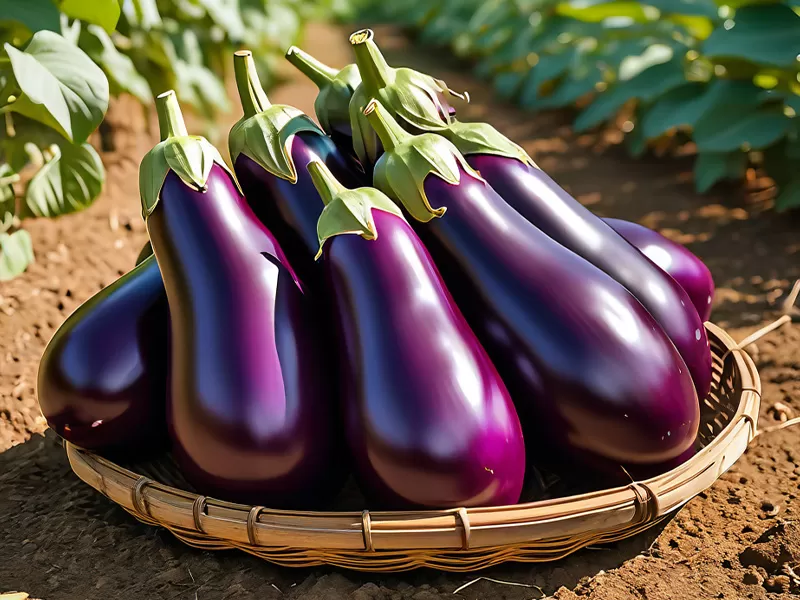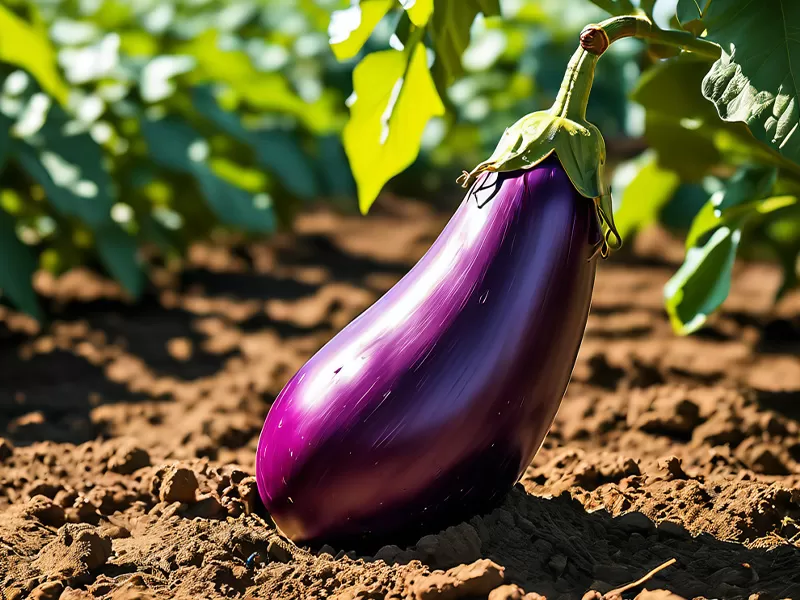Eggplant High Yield Guide
Science-Backed Strategies for Commercial Growers
(Based on international authoritative literature and self-developed fertilizer integration plan)
Boost profits and slash losses with this evidence-based roadmap for eggplant cultivation. Drawing from global research (FAO, Nature Food, Journal of Cleaner Production), this Eggplant High Yield Guide addresses critical pain points identified by farmers from Bangladesh to the Netherlands. Discover how precision nutrition and integrated management increase yields by 19.6–35% while reducing input costs [Reference:Fx36/Lunlunapp]
1. Genetic Selection & Climate Adaptation
1.1 Disease-Resistant Hybrids
Phytophthora blight and fruit borers cause 30-60% yield loss in tropical regions. Solutions:
Bt-engineered varieties (e.g., ‘Bt Begun’ in Bangladesh) reduce insecticide sprays by 80% and increase yields by 19.6% (Frontiers in Bioengineering and Biotechnology, 2020) .
CRISPR-edited thermotolerant strains maintain productivity at 38°C+ (Nature Biotechnology, 2025) .
1.2 Premium Seedless Varieties
Italian GM seedless eggplants yield 30-35% more edible pulp and tolerate temperature fluctuations (BMC Biotechnology, 2002) 5. Ideal for processing markets seeking higher value per hectare.
2. Precision Soil & Substrate Management
2.1 Heavy Metal Remediation
Industrial fertilizers contribute Cd/As contamination exceeding 5 ppm in 30% of farms (Applied Soil Ecology, 2025) . Mitigation protocol:
Apply lignite-based humic acid powder (/product/lignite-humic-acid-powder/) at 3 kg/ha via drip irrigation – chelates toxins and increases phosphorus availability by 45% .
Integrate microbial bio-organic fertilizer (/product/microbial-bio-organic-fertilizer/) (1.5 tons/ha quarterly) to degrade pesticide residues by 78% in 60 days .
2.2 No-Till Regeneration
Iowa State trials show cardboard mulching (as demonstrated by Spade To Fork) reduces Fusarium wilt by 35% and boosts soil organic matter . Layer sequence:
Untreated cardboard (weed suppression)
Small-molecule organic fertilizer (/product/small-molecule-organic-fertilizer/) (2 tons/ha for 45% OM)
Biochar (10 tons/ha; enhances CEC)
3. Water-Smart Irrigation & Fertigation
3.1 Moisture Stress Control
California farms using 15/30 cm depth tensiometers reduced water use 22% while increasing fruit uniformity. Critical thresholds:
Flowering: -25 kPa
Fruit set: -35 kPa
(Agricultural Water Management, 2024)
3.2 Biostimulant-Enhanced Fertigation
Nigerian trials combining MKP (0-52-34) (/product/mkp/) at 15 kg/ha with amino acid-Ca/Mg liquid (/product/calcium-magnesium-fish-protein-liquid/) increased flower retention by 40% and reduced blossom-end rot by 90% 10. Application timing: Early fruiting via drip systems.
4. Phase-Specific Nutrition Protocols
4.1 Growth Stage Formulations
| Stage | Key Needs | Optimal Product | Rate |
|---|---|---|---|
| Transplanting | Root establishment | Fish protein hydrolysate | 2 L/ha soil drench |
| Flowering | Pollination support | Amino acid-B liquid | 3 L/ha foliar |
| Fruit swelling | Calcium mobilization | NPK 10-5-45 + TE | 25 kg/ha drip |
4.2 Foliar Diagnostics
Dutch growers using leaf tissue analysis (sampled at sunrise) reduced fertilizer waste by 30%. Critical thresholds for mature leaves:
N: 4.0-5.0% | K: 3.5-4.5% | B: 35-50 ppm
5. Integrated Pest & Disease Defense
5.1 Fruit Borer Management
Conventional farms require 80+ insecticide sprays per season. Sustainable alternatives:
Bt eggplant varieties: Eliminate borer damage without chemicals
Kaolin clay (6%) sprays: Repel 70% thrips (Entomologia Experimentalis, 2025)
5.2 Soil-Borne Pathogen Control
Pre-plant treatment protocol:
Apply root-knot nematode biocontrol agents (/product-category/microbial-agent/) – reduces Meloidogyne infections by 89% (Crop Protection, 2024)
Incorporate potassium humate granules (/product/potassium-humate-granules/) (200 kg/ha) – boosts fruit lignin by 28% against Colletotrichum
6. Harvest & Post-Harvest Optimization
6.1 Color-Based Harvest Timing
Harvest glossy purple varieties when 70-80% skin surface achieves deep uniform color. This stage maximizes anthocyanin levels while reducing pitting during transport (Postharvest Biology and Technology, 2024).
6.2 Chilling Injury Prevention
Store at 10-12°C/90-95% RH. Turkish research shows 1 mM salicylic acid dips reduce pitting by 60% and extend shelf life to 21 days .
Conclusion: Scaling Profitability Sustainably
Bangladeshi farmers using integrated strategies achieved 21.7% higher income through yield boosts and input savings 5. Key success factors:
Resilient genetics: Bt or CRISPR-edited varieties
Precision nutrition: Tissue analysis-guided fertigation
Biological safeguards: Microbe-mediated pathogen control
For bulk fertilizer inquiries tailored to commercial operations, visit our B2B portal: /shop/.
If you are interested in this article, or have any questions that need to be answered, You can find us at any time through the chat icon in the lower right corner of the webpage. Of course, you can also check out our other social media (such as Linkedin) to learn more about us.
Authoritative References:
FAO AGRIS Database: Global agricultural research repository
Nature Food: Peer-reviewed sustainable agriculture research
Journal of Cleaner Production: Environmental impact studies
Agricultural Water Management: Irrigation efficiency metrics
Applied Soil Ecology: Soil health research
Frontiers in Bioengineering: Biotechnology applications in agriculture

Thriving eggplant fields! Our fertilizer boosts growth & yield for bigger harvests. 🌱🍆 #FarmToTable

Premium eggplants, perfect shape & shine! Our nutrition makes the difference. 🧺✨

Healthy inside & out! Rich color & firm flesh thanks to our fertilizer. 🔍💜
